Ancient Chinese Ingenuity Created Sophisticated Time Keeping Machines: Proof Of Remarkable Ancient Knowledge
A. Sutherland - AncientPages.com - In 727, the world's first mechanical clock was constructed by the Chinese Tantric Buddhist monk and mathematician Yixing (683-727). It was also an astronomical instrument.
The Chinese invention of a mechanical clock that is considered to be the 'most venerable of all escapement clocks', predates the European mechanical clock by several centuries.
It's worth mentioning that an escapement is the crucial component of a mechanical clock, that regulates the driving force of the timepiece and allows a rotating wheel to turn slowly, continuously, and with constant speed.
Left: The original diagram of Su's book showing the inner workings of his clocktower. Credit: Public Domain. Right: A scale model of Su Song's astronomical clock tower. Credit: Public Domain
Today no one doubts that the invention of the mechanical clock was one of the greatest scientific and technological achievements.
The clock is described in Robert Temple's very interesting book The Genius of China: 3,000 Years of Science, Discovery, and Invention as follows:
"[It] was made in the image of the round heavens and on it were shown the lunar mansions in their order, the equator and the degrees of the heavenly circumference.
Water, flowing into scoops, turned a wheel automatically, rotating it one complete revolution in one day and night [24 hours].
Besides this, there were two rings fitted around the celestial sphere outside, having the sun and moon threaded on them, and these were made to move in circling orbit... And they made a wooden casing the surface of which represented the horizon, since the instrument was half sunk in it.
Credit: Robert Temple
It permitted the exact determinations of the time of dawns and dusks, full and new moons, tarrying and hurrying. Moreover, there were two wooden jacks standing on the horizon surface, having one a bell and the other a drum in front of it, the bell being struck automatically to indicate the hours, and the drum being beaten automatically to indicate the quarters.
All these motions were brought about by machinery within the casing, each depending on wheels and shafts, hooks, pins and interlocking rods, stopping devices and locks checking mutually [i.e. the escapement]".
Yixing's clock was, like water clocks, subject to the vicissitudes of the weather. In order to keep the water in them from freezing, torches generally burnt beside them.
See also:
Highly Advanced Robots In Ancient China
The Lycurgus Cup: Fascinating Artifact That Reveals Prehistoric Knowledge Of Nanotechnology
Ancient Sophisticated Technologies: Mercury-Based Gilding That We Still Can’t Reach
Merkhet – An Ancient Egyptian Timekeeping Instrument
Therefore, in the next great and far more complex clock of which we have accounts in China, mercury was substituted for water because of the freezing problem, and one of the best examples is a much larger clock built by Zhang Sixun in 976 AD and described in this way:
"... a tower of three storeys each over 3 metres in height, within which was concealed all the machinery. It was round at the top to symbolize the heavens and square at the bottom to symbolize the earth. Below there was set up the lower wheel, lower shaft, and the framework base.
There were also horizontal wheels, vertical wheels fixed sideways, and slanting wheels; bearings for fixing them in place; a central stopping device and a smaller stopping device [i.e. the escapement] with a main transmission shaft. Seven jacks rang bells on the left, struck a large bell on the right and beat a drum in the middle to indicate clearly the passing of the quarter-hours.
Water-powered armillary and celestial tower. Credit: Natural Museum of National Science Taiwan
Each day and night [i.e. each 24 hours] the machinery made one complete revolution, and the seven luminaries moved their positions around the ecliptic. Twelve other wooden jacks were also made to come out at each of the doublehours, one after the other, bearing tablets indicating the time..."
And so it was time for the "Cosmic Engine", the greatest of all Chinese medieval clocks built by the astronomer Su Song in 1092. This device was an astronomical clock tower more than 10 metres high, like the previous one of Zhang.
Su Song's tower was additionally equipped with a huge bronze power-driven astronomical instrument called an armillary sphere, with which one could observe the positions of the stars.
A celestial globe inside the tower - that could always demonstrate planetarium - turned in synchronization with this sphere above, so that the two could constantly be compared. We are told that the observations made on the demonstrational globe inside and by the observational sphere above "agreed like the two halves of a tally".
On the front of the tower was a pagoda structure of five storeys, each having a door through which mannikins and jacks appeared ringing bells and gongs and holding tablets to indicate the hours and other special times of the day and night. All of these time-indicators were operated by the same giant clock machinery which simultaneously turned the sphere and the globe.
Knowledge of the principles of Su Song's clock spreading to Europe led to the development of mechanical clocks in the West two centuries later.
Written by – A. Sutherland - AncientPages.com Senior Staff Writer
Copyright © AncientPages.com All rights reserved. This material may not be published, broadcast, rewritten or redistributed in whole or part without the express written permission of AncientPages.com
Expand for referencesMore From Ancient Pages
-
 Underwater Rock Carvings Of Ancient Egyptian Pharaohs Discovered Near Aswan
Archaeology | Jul 20, 2024
Underwater Rock Carvings Of Ancient Egyptian Pharaohs Discovered Near Aswan
Archaeology | Jul 20, 2024 -
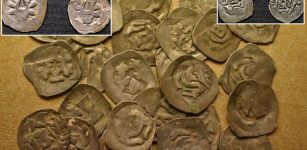 A Hoard Of Silver Coins Found Accidentally Under An Uprooted Tree Near Pieštany, Slovakia
Artifacts | Oct 28, 2020
A Hoard Of Silver Coins Found Accidentally Under An Uprooted Tree Near Pieštany, Slovakia
Artifacts | Oct 28, 2020 -
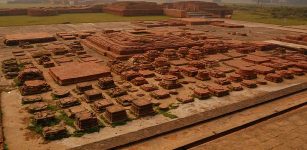 Vikramashila: India’s Main Intellectual And Learning Center Of Tantric Buddhism
News | Sep 19, 2015
Vikramashila: India’s Main Intellectual And Learning Center Of Tantric Buddhism
News | Sep 19, 2015 -
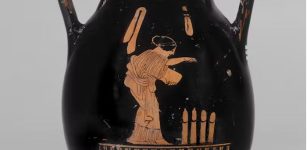 The Long And Satisfying 28,000-Year History Of The Dildo
Featured Stories | Feb 27, 2023
The Long And Satisfying 28,000-Year History Of The Dildo
Featured Stories | Feb 27, 2023 -
 Mysterious Ancient Lost Civilization Of North America Had Interest In One Particular Constellation
Ancient Mysteries | Apr 17, 2018
Mysterious Ancient Lost Civilization Of North America Had Interest In One Particular Constellation
Ancient Mysteries | Apr 17, 2018 -
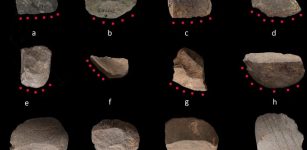 Earliest Evidence Of Rice Harvesting Provided By China’s Ancient Stone Tools
Archaeology | Dec 8, 2022
Earliest Evidence Of Rice Harvesting Provided By China’s Ancient Stone Tools
Archaeology | Dec 8, 2022 -
 Ale Conner: Unpleasant And Dangerous Profession In Medieval England
Ancient History Facts | Oct 19, 2017
Ale Conner: Unpleasant And Dangerous Profession In Medieval England
Ancient History Facts | Oct 19, 2017 -
 How Did A Major Cooling Event 8,200 Years Ago Affect Hunter-Gatherers?
Archaeology | Jan 28, 2022
How Did A Major Cooling Event 8,200 Years Ago Affect Hunter-Gatherers?
Archaeology | Jan 28, 2022 -
 On This Day In History: Canute Lavard Was Murdered By His Cousin, Magnus I Of Sweden – On Jan 7, 1131
Historical Figures | Jan 7, 2017
On This Day In History: Canute Lavard Was Murdered By His Cousin, Magnus I Of Sweden – On Jan 7, 1131
Historical Figures | Jan 7, 2017 -
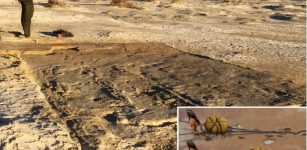 Remarkable Discovery – 22,000-Year-Old Drag-Marks In New Mexico Are The Earliest Evidence Of Transport Vehicles Ever Found!
Archaeology | Feb 24, 2025
Remarkable Discovery – 22,000-Year-Old Drag-Marks In New Mexico Are The Earliest Evidence Of Transport Vehicles Ever Found!
Archaeology | Feb 24, 2025 -
 On This Day In History: Great Fire Of Rome Recorded – On July 18, 64 AD
News | Jul 18, 2016
On This Day In History: Great Fire Of Rome Recorded – On July 18, 64 AD
News | Jul 18, 2016 -
 How Did Vikings Celebrate Yule – The Winter Solstice?
Christmas Traditions | Dec 21, 2024
How Did Vikings Celebrate Yule – The Winter Solstice?
Christmas Traditions | Dec 21, 2024 -
 Ivriz Relief: 3,000-Year-Old Hittite Relief – Oldest Known Symbol Of Agricultural Fertility In History
Artifacts | Jun 13, 2019
Ivriz Relief: 3,000-Year-Old Hittite Relief – Oldest Known Symbol Of Agricultural Fertility In History
Artifacts | Jun 13, 2019 -
 Sirius Mystery – Scientific Evidence Of Alien Contact 5,000 Years Ago – Book Review
Civilizations | Apr 1, 2014
Sirius Mystery – Scientific Evidence Of Alien Contact 5,000 Years Ago – Book Review
Civilizations | Apr 1, 2014 -
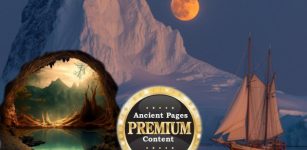 Sailor’s Strange Discovery Of An Unknown Ancient Underground World At The North Pole
Featured Stories | Feb 10, 2024
Sailor’s Strange Discovery Of An Unknown Ancient Underground World At The North Pole
Featured Stories | Feb 10, 2024 -
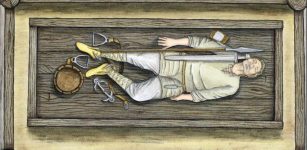 Magnificent Chamber Graves Of Four Scandinavian Warriors Discovered In Poland – The Piast Dynasty In New Light
Archaeology | Jan 22, 2020
Magnificent Chamber Graves Of Four Scandinavian Warriors Discovered In Poland – The Piast Dynasty In New Light
Archaeology | Jan 22, 2020 -
 London’s Oldest Theater Red Lion Discovered Beneath Whitechapel
Archaeology | Jun 10, 2020
London’s Oldest Theater Red Lion Discovered Beneath Whitechapel
Archaeology | Jun 10, 2020 -
 Can Peptide Droplets Explain The Emergence Of The First Living Organisms On Earth?
Archaeology | Oct 20, 2021
Can Peptide Droplets Explain The Emergence Of The First Living Organisms On Earth?
Archaeology | Oct 20, 2021 -
 Unusual Secret May Be Hidden In A Mysterious Valley In The American Southwest
Featured Stories | Jan 30, 2024
Unusual Secret May Be Hidden In A Mysterious Valley In The American Southwest
Featured Stories | Jan 30, 2024 -
 Humans In Africa Fled To The Mountains During The Last Ice Age
Archaeology | Aug 9, 2019
Humans In Africa Fled To The Mountains During The Last Ice Age
Archaeology | Aug 9, 2019



